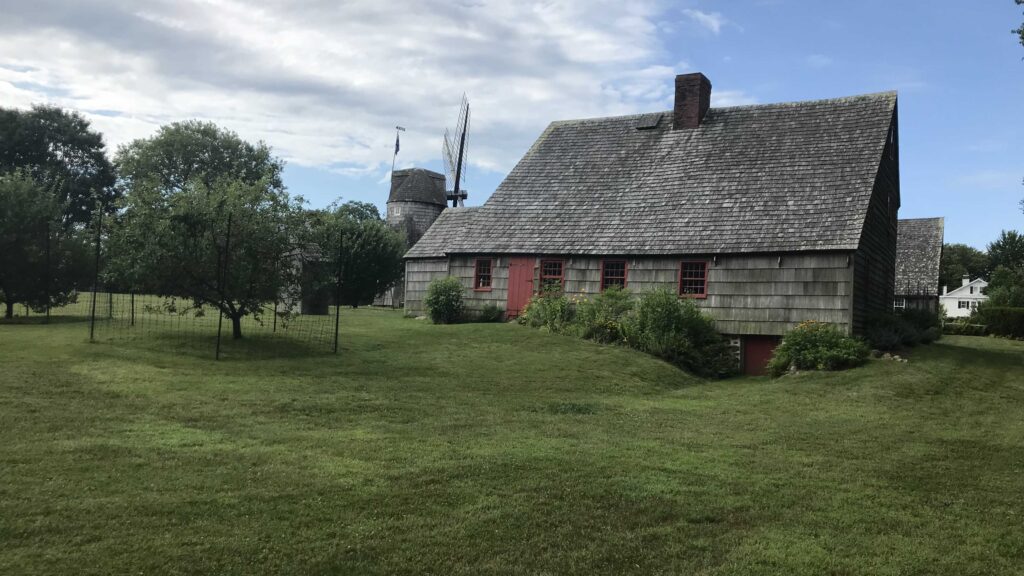
10 James Lane, East Hampton
The Mulford Farmhouse’s opening days and hours vary so please check our Event Calendar to plan your visit. To schedule a private visit, please call 631.324.6850, x2.
Mulford Farm, listed on the National Register of Historic Places, is considered one of America’s most significant, intact, English Colonial farmsteads.
Originally built in 1680, the farmhouse has been left largely unchanged since 1750. The majority of the framing and wood beams in the house have remained undisturbed, enabling scholars to tell the story of the successive changes over time.
With a couple of exceptions, the home was owned by generations of Mulfords from 1712 until it was acquired by the East Hampton Historical Society in 1948. Furnished with period artifacts, the house tells the story of the American Revolution in East Hampton when Colonel David Mulford was a leader for American independence while being the largest slaveholder on the South Fork, illustrating what historian Edmund Morgan has called “the American Paradox.”
The Mulford Barn, constructed in 1721, is one of the most intact early-18th-century English-plan barn forms in New York State and is recognized as an outstanding example of early-18th-century construction methods and materials.
The location of the barn also provides insight into the history of settlement patterns in this region of New York. The Mulford Barn was evaluated by the State Department of Parks, Recreation and Historic Preservation in 1990 and deemed the second most important 18th-century barn in New York State.
Also on the grounds at Mulford Farm is “Rachel’s Garden,” a recreated 18th century dooryard garden. Designed and generously maintained by the Garden Club of East Hampton, the garden features plants that were grown by the colonists for medicinal, culinary, dyeing and housekeeping purposes. Rachel’s Garden was designed and planted by East Hampton Garden Club members, whose generous service throughout the growing season ensures its beauty and care.
Even when the Farmhouse isn’t open, visitors can walk the grounds of the property and use the 1776AR app to learn about the history of the site.
